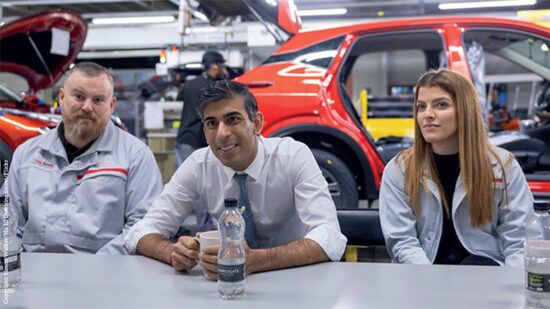A new guide to help individuals and private foundations wanting to donate towards solving climate issues has been published by Lombard Odier in partnership with WWF
The Donor’s Guide to the Environment has been designed as a resource for philanthropists wanting to make a meaningful contribution to reverse biodiversity loss and address threats to nature.
It aims to raise awareness of the issues and simplify the process of giving necessary funding for projects by providing crucial information and analysis of possible solutions to the climate emergency.
As well as detailed information on the current climate situation, the guide includes a list of concrete projects, expected outcomes and donor opportunities for preserving oceans, forests and freshwater habitats across the globe, as well as case studies in the field of impact investing.
Marco Lambertini, director general of WWF International, said: “One million species are threatened with extinction and the way we currently produce and consume is causing irreparable damage to biodiversity, land, forests, oceans and river systems. The science is clear: the loss of nature together with climate change is a global emergency putting our economic prosperity, wellbeing, development and very survival at risk.”
Need for more funding
Lambertini added that despite the donations towards solving the climate change emergency rising and awareness increasing to a higher level than ever before, “faster progress is needed, along with the commensurate financing, to rebalance our relationship with nature”.
“Philanthropy can help today and more than ever before in financing actions that target the root causes of nature loss and climate change and mobilise decision makers in driving the much needed systemic change for a sustainable future for people and planet,” he said.
The Donor’s Guide to the Environment lists donation opportunities of various sizes to demonstrate that any amount can go a long way towards solving the climate crisis.
For example, $35,000 (£28,140) can kick-start the development of a local sustainable fishing industry in the Mediterranean, while a project to prepare a developing country for climate change would require funding in the hundreds of millions or billions of dollars.
At this stage, however, we are not donating nearly enough to make real change happen. For example, a study from the European Foundation Centre found that the 87 largest European foundations gave just €587m in environment-related grants in 2016 – less than 1% of the estimated €60bn total given in grants that year.
Patrick Odier, senior managing partner of Lombard Odier and president of Fondation Lombard Odier, said: “The estimated funds needed to protect our climate and halt the loss of biodiversity are enormous. While the majority of the funding will come from governments, there are tremendous opportunities for philanthropic donors to make a difference as well.
“Philanthropy has a rare value. It is the catalyst that can ignite significant change in our culture. It can fund and support visions, no matter at what stage, be it the seed of a good idea or a fully-grown initiative.”
Innovative finance
Odier noted that the Donor’s Guide also looks at some of innovative sustainable finance initiatives and tools, as the finance sectors “steps up to the challenge”.
One example is the Blue Bond from The Nature Conservancy, which raises money to refinance the debts of developing countries on the condition that they use this money to protect and preserve their natural environments.
Odier said: “Strategic philanthropic giving is increasingly playing a pivotal role in protecting the planet’s natural heritage for future generations. Faced with the complexity and scope of this challenge, we want to leverage local experience and science and provide the best tools to support those who wish to become fully involved.”








